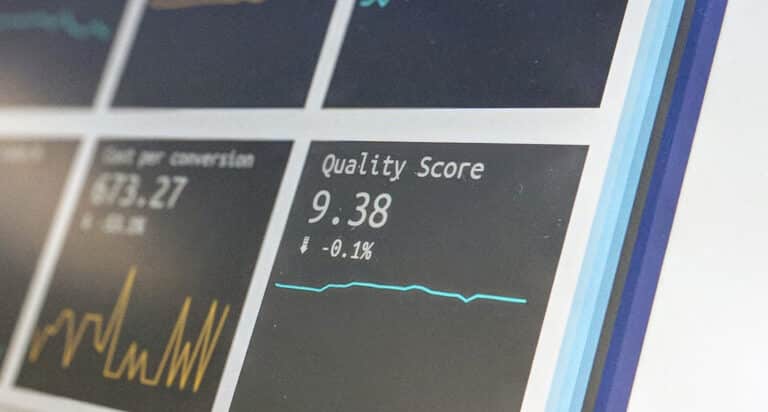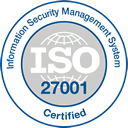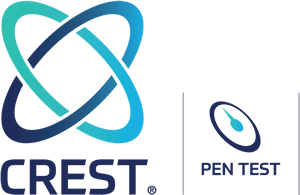Securing SaaS platforms and applications
The software-as-a-service (SaaS) market has grown rapidly in the last few years. As of 2023, there are over 30 thousand SaaS startups worldwide, most in the USA and Canada. Europe, however, is catching fast, and its growth rate is already faster than the American one, with the UK, France, and Germany leading the way.
Software-as-a-Service is one of the few industries aided by the pandemic and shifting work model, and its prognosis for the future is vital. However, SaaS vendors face challenges, and cybersecurity is one of the major ones. In this post we’ll delve into the benefits of penetration testing for SaaS applications.
What are the main cyber risks for SaaS companies?
A SaaS application is usually hosted on the provider’s servers and accessed by users through the internet. This delivery model has several advantages, such as lower costs and easier maintenance. Still, it carries certain risks, such as data breaches, insecure APIs, malicious insiders, account hijacking (also known as account takeover), or phishing.
Some of the other risks inherent to the SaaS model and often exploited by hackers fall within the category of OWASP Top 10 for web applications and APIs:
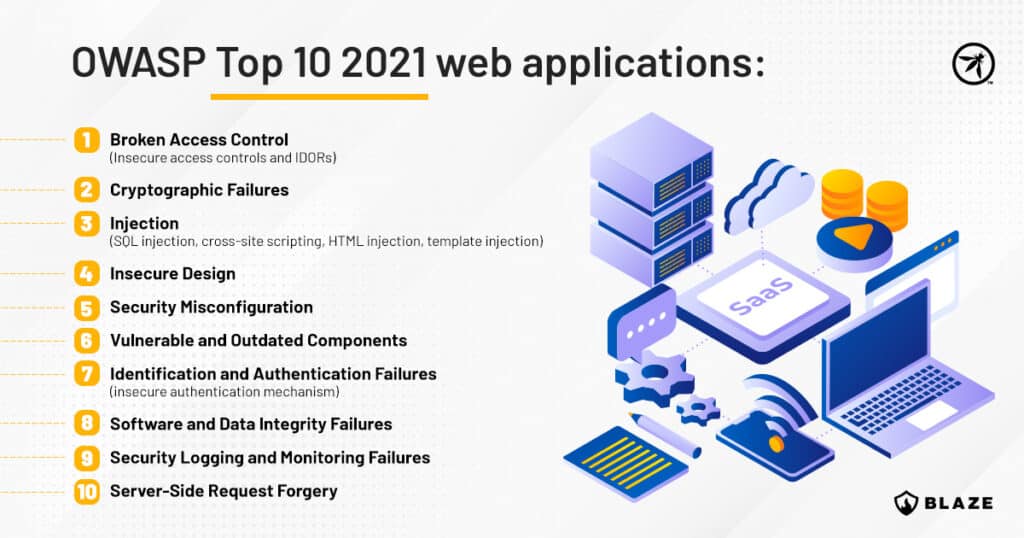
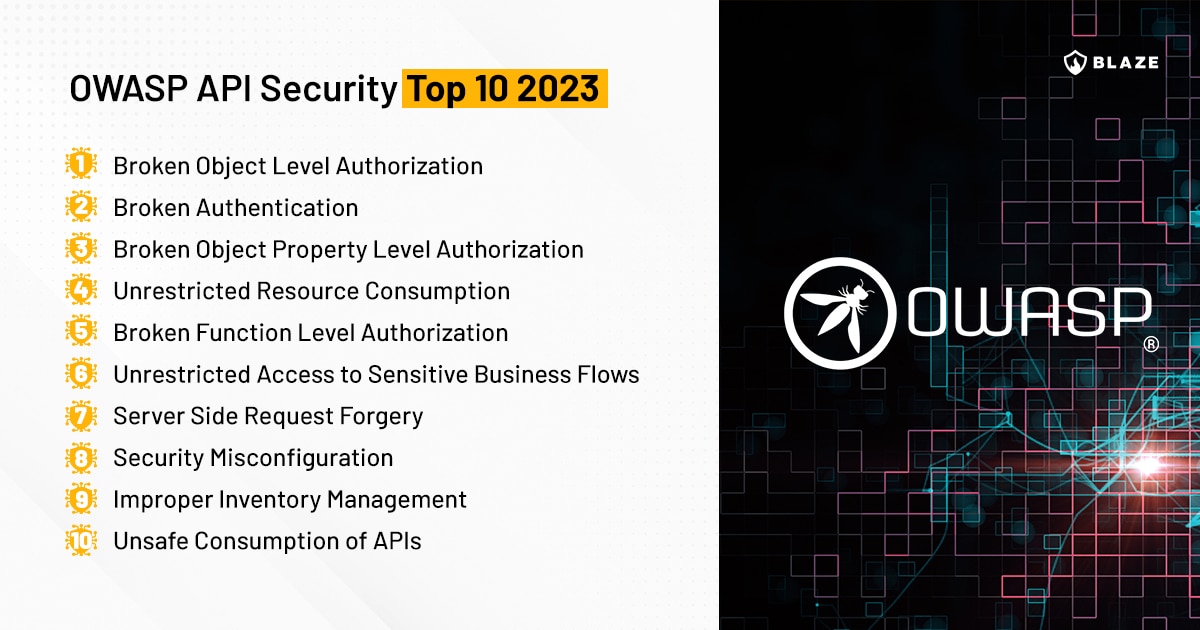
It means that logic vulnerabilities and technical security issues such as the ones above can be abused and may lead to data breaches, privacy violations, and other events that may adversely impact a SaaS platform’s security posture.
Sometimes it is the usability of the app that can be exploited, like in the PayPal phishing scam, in which scammers create a PayPal business account to send fake invoices using only an e-mail address of a victim, or like in the Zelle fraud that exploits password resetting procedure.
A security assessment in the form of a penetration test performed from the point of view of an attacker by a cybersecurity engineer who understands the organization’s business logic can demonstrate how hackers could exploit the intentional functionalities of a SaaS app.
How to secure SaaS applications?
While there is no definitive answer on how to secure a SaaS platform or identify vulnerabilities in multiple SaaS applications, a few recommendations can be applied to ensure strong security measures, protecting customer data and intellectual property and reducing the probability of critical vulnerabilities.
Get SOC 2 compliant
Data security is the biggest concern of SaaS clients (and vendors, as they share responsibility for data losses and breaches), which is why SaaS providers should be able to prove they have strong security controls and cybersecurity measures in place. The most common compliance audits demonstrating that the vendor took the necessary steps to protect client information are SOC 2 and ISO 27001.
SOC 2 – System and Organization Controls 2 – is a compliance framework developed by the American Institute of Certified Public Accountants (AICPA) based on Trust Services Criteria, which are: security, availability, processing integrity, the confidentiality of the information, and privacy of personal information.
The audit ends in a report confirming the vendor has delivered on the relevant criteria (usually, security and availability are always included in the report) and has the necessary controls in place.
Implement a SaaS security checklist
As a vendor responsible for creating SaaS solutions, here’s a short checklist of items to consider when assessing the security of your own SaaS applications that can be used to mitigate risks:
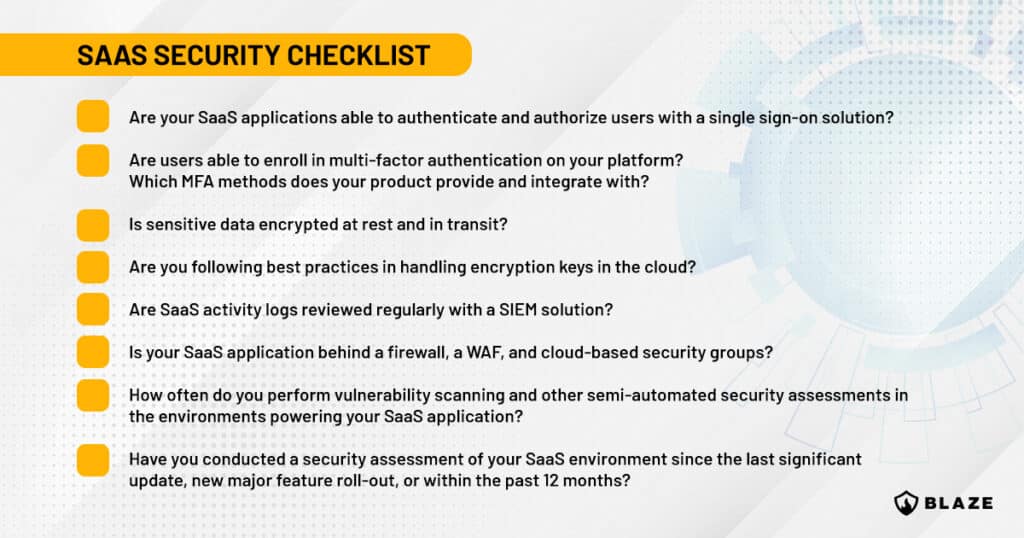
By taking these factors into account, you can help ensure that your SaaS applications are as secure as possible. Overall, the best practices for SaaS security involve proactive risk management and robust security controls to protect against unauthorized access and data breaches.
Perform regular penetration tests for your SaaS applications
Another cybersecurity precaution businesses in this space should often take is performing penetration testing (also known as ethical hacking) regularly.
Third-party application security testing helps SaaS organizations prepare to obtain the SOC 2 Type II report, provides essential insights into vulnerabilities and weak points of their systems and applications, and brings extra confidence for customers and business partners that your security controls are in place. SaaS clients also often ask for the date of the last penetration test before adopting the service.
Why should SaaS startups perform penetration testing?
A SaaS pentest is a real-world simulation attack performed by cybersecurity engineers or ethical hackers to test the security controls of a system or application. SaaS penetration test focuses on the applications, front-end, and back-end APIs, and a thorough review of external facing assets.
Third-party application security testing is the best way to challenge the infrastructure of SaaS systems and build confidence by identifying and mitigating security risks.
What are the most common types of pentest for SaaS?
There are three main approaches to identifying vulnerabilities in SaaS penetration testing assessment: black box, grey box, and white box
- A black box pentest is conducted without any prior knowledge of the system. The cybersecurity engineer has access to public information. Cons? It covers only a handful of typical scenarios and the point of view of an unauthenticated user
- A grey box pentest is conducted with some limited knowledge of the system. The pentester might have access to documentation or be able to speak to someone who does. Test credentials should be provided, preferably two for each role the application might have. It is the most recommended and common approach of pentest for SaaS apps.
- A white box pentest is conducted with full knowledge of the system. The pentester has complete access to all documentation, code, and configurations. Use this approach if you want a deep dive and are comfortable sharing your source code with the pentest provider.
How to choose the best SaaS security testing approach and the right provider
As SaaS applications are built on modern tech stacks, their security challenges differ from those of, for example, more traditional banking systems or legacy applications written in older programming languages. When choosing a pentest provider, it is essential to find one with experience performing penetration testing for SaaS applications. This will ensure they can adequately challenge your SaaS application’s security and identify potential risks.
Once you have selected an experienced penetration testing provider, it is time to decide how much information you are willing to share with them and how deep you want the analysis to be. Choose a gray-box penetration test if you want to cover insider threats and the most common attack scenarios, and if you are also willing to share your source code, consider a white-box pentest.
The future of SaaS security testing
Software-as-a-Service market value is expected to double in the USA and UK and triple in Germany by 2025. But with the increase in popularity comes the increased need for security. The main advantage of this business model – accessibility via any web browser – is its greatest weakness, at least from the cybersecurity standpoint.
With an average organization using 110 SaaS apps and with organizations having more security concerns, vendors and clients need to be aware of the cybersecurity risks of web-based software so that they can all grow and integrate securely, therefore making SaaS penetration testing, among other measures, a vital practice to address security vulnerabilities and decrease risks in SaaS platforms.
